Dalat is often referred to as the “City of a Thousand Flowers” by some, the “City of Love” by others, and the “City of Spring” by yet another group. Nestled in a mountainous region and surrounded by pine forests, it enjoys a mild climate, with temperatures averaging around 20 degrees Celsius throughout the year.
Due to its temperate climate, Dalat has become an agricultural center in Vietnam. While the southern region is known for producing much of the country’s rice, Dalat is a key supplier of fresh produce, including the famous, strong coffee found in cafes throughout the city.
Agricultural tourism is not a new concept in Vietnam, although it is rarely recognized as such. Every year, hundreds of thousands of visitors from across the globe flock to the Mekong Delta to witness its vast, lush rice paddies stretching endlessly between rivers and streams. Additionally, many more travel to the northern regions of Ha Giang and Sapa, where they explore the winding mountain roads, surrounded by terraced fields that, in autumn, transform into golden layers of ripened grain.
Agricultural tourism in Dalat stands apart due to the unique nature of farming in the region. Over the past decade, agriculture has undergone a transformation, with biotechnology replacing traditional, labor-intensive methods. Farmers now employ innovative systems to increase their productivity while reducing effort. This shift has led to fresher, more abundant food, and has made the region’s tourism scene even more captivating.
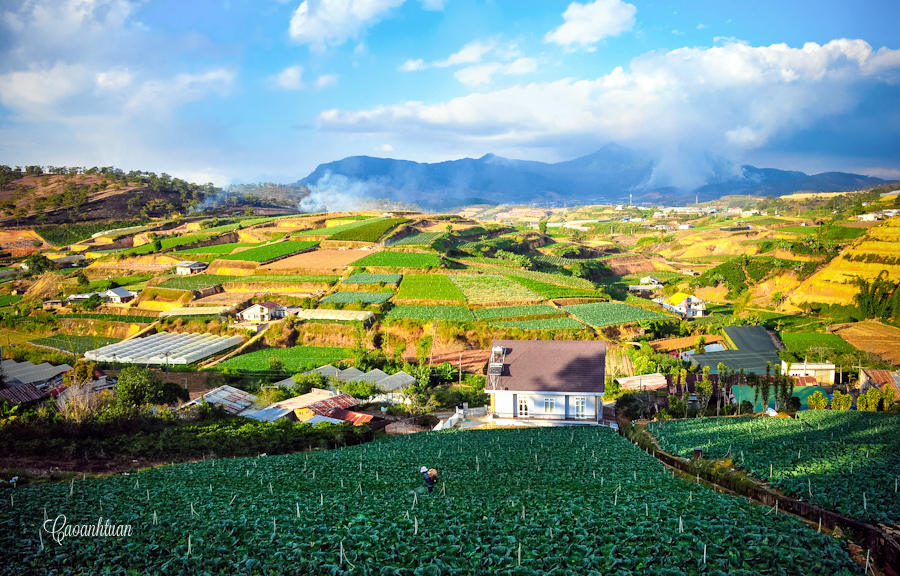
Ten years ago, honeymooners and families would visit to snap selfies in flower-filled fields or enjoy coffee at cafes with mountain views. Today, with the rise of “agritourism,” visitors are drawn specifically to Dalat to explore and learn about its high-tech farming, seeking both educational and recreational experiences.
Agritourism in Dalat offers visitors a unique opportunity to immerse themselves in culture, cuisine, and nature all at once. From picking fresh strawberries and sipping local tea to tasting coffee and planting hydroponic lettuce, the region provides a variety of unforgettable experiences.
Hydroponic Farming
Hydroponic farming is arguably the most significant agricultural advancement in Dalat in recent decades. In this method, plants are grown in nutrient-rich water within horizontal rails rather than in soil, often within controlled greenhouse environments. This approach eliminates the need for many conventional fertilizers and pesticides, offering precise control over germination and harvesting—something traditional farming methods cannot achieve.
Since hydroponic plants don’t rely on soil, the possibilities for system design are endless. Hydroponic rails can be stacked vertically, and plants can be grown along walls or even suspended from the ceiling.
A significant portion of Vietnam’s fruits and vegetables now originate from Dalat’s hydroponic greenhouses, making it a must-visit destination to witness how this technology has completely revolutionized the country’s agricultural produce.
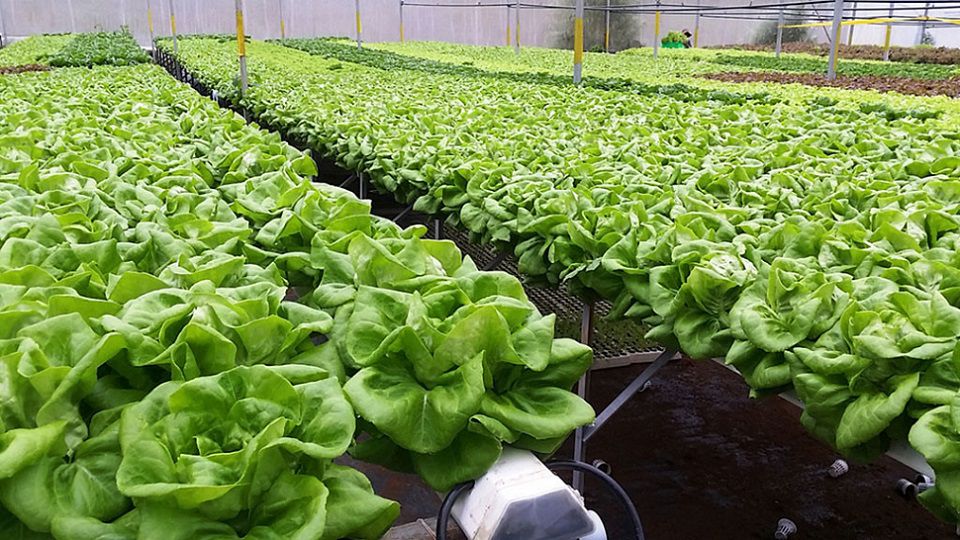
Hanging Strawberry Farms
Strawberries are among the most fascinating plants cultivated using hydroponic methods. Traditional strawberry farming often faces challenges with pests, leading to the use of chemical pesticides and intensive manual labor. In Dalat, however, strawberry farmers have started growing their crops upside down, with this innovative technique first introduced by Biofresh Company. Since then, it has gained popularity and been adopted by other farms in the region.
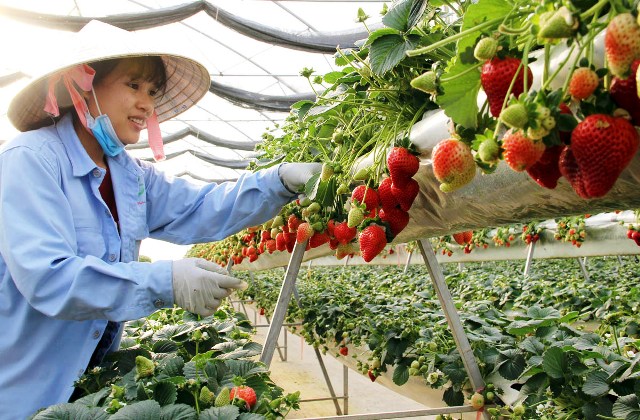
These suspended strawberry gardens have become a popular tourist attraction. The 3,000-square-meter greenhouse, teeming with vibrant pink and green strawberry plants, offers a stunning view. With less labor required for growing the strawberries, farmers can now shift their focus to the tourism industry and the creation of value-added products such as jams and preserves.
Many farms in Dalat offer educational tours, with some providing small baskets for visitors to pick their own ripe, juicy fruits. Tourists should not miss the chance to enjoy fresh strawberries, as they are unique to the region and do not grow well elsewhere in Vietnam.
In addition, Da Lat boasts a unique integrated farm that cultivates a variety of rare and valuable agricultural products, typically found only in colder regions. Located in the Van Thanh Flower Village, the farm grows strawberries, giant pumpkins, pepino melons, black tomatoes, and many other crops. As you descend through the valley, you’ll encounter fields of hydrangeas, daisies, roses, scarlet sage, anthuriums, carnations, and snapdragons. Further down, you’ll come across unusual fruits that thrive only in Da Lat’s cool and refreshing climate.
City of A Thousand Flowers
Flowers are a major export of Dalat and have been a key attraction for tourists for many years. The city is home to thousands of flower varieties, cultivated in numerous farms and gardens, with its climate supporting both Western and Eastern species.
Some farms, such as Thai Phien Flower Village, balance both tourism and production. Thai Phien cultivates nearly a thousand flower species across greenhouses and open fields, covering 230 hectares of vibrant color—just one of many farms with similar offerings.
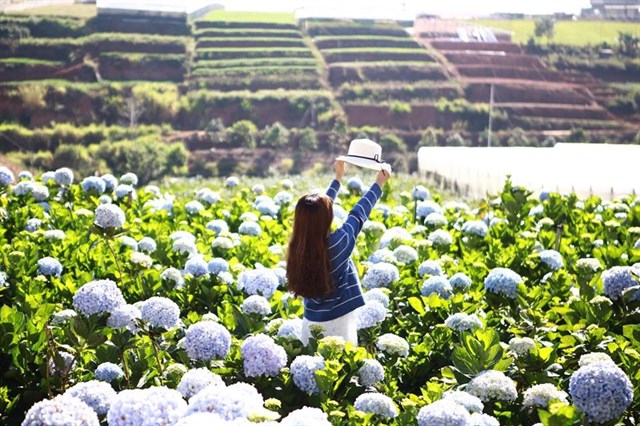
Vibrant colors stretch endlessly in adjacent rows, with yellow sunflowers vying for attention alongside blue hydrangeas and vivid red roses in a single field. No words or photographs can truly capture the mesmerizing kaleidoscope of hues, which is even more striking beneath a vast, clear blue sky.
Centuries of Tea
Dalat’s greenhouses offer a more contained experience, while its tea plantations reveal a vast, open landscape. Much like the rice terraces of northern Vietnam, the tea fields here wind around hills, their rows of fragrant bushes creating a stunning, natural pattern. In contrast to the scientists working in high-tech greenhouses, the tea leaves are still harvested by hand, with indigenous women wearing wide-brimmed hats and colorful skirts adorned with unique ethnic patterns.
Several centuries ago, this land was used to produce tea for the French, with all of it being exported abroad. Today, the farms are owned by Vietnamese families who supply both the country and the world.
Stroll along the dirt paths of Cau Dat Tea Hill toward the nation’s oldest tea factory, established by the French in 1927. Begin your visit in the late afternoon, allowing the sun to bathe the leaves in a golden glow and paint the sky with vibrant hues. As the evening air cools, finish the tour with a steaming cup of tea and enjoy the golden hour as it blankets the lush landscape.
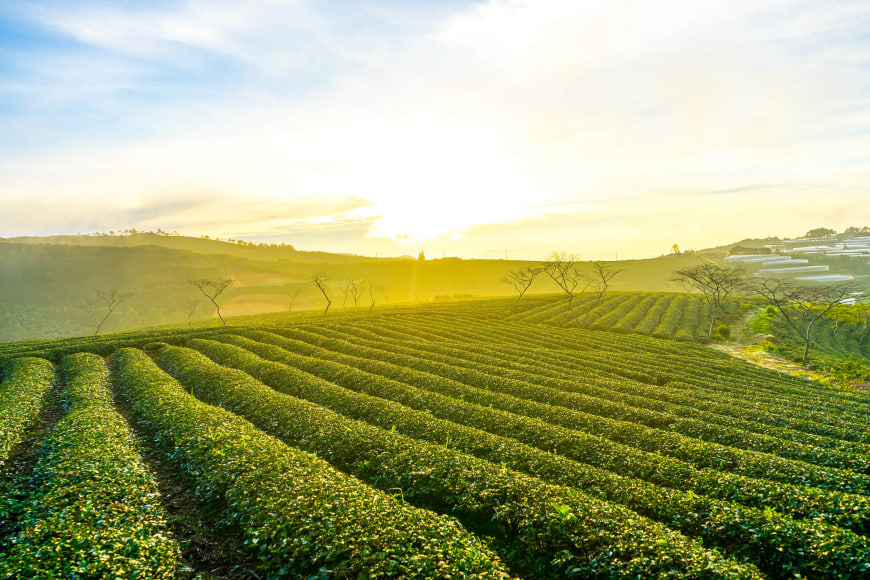
Vietnamese Coffee -Robusta and Arabica
Vietnam is the world’s second-largest coffee producer, with the majority of its coffee grown in the Central Highlands, including Dalat. While “Vietnamese coffee” is typically associated with Robusta beans – known for their strong, thick, and highly caffeinated flavor – the country also produces exceptional Arabica beans. These smoother, more refined beans have been steadily making their way into specialty cafes over the past decade. Grown exclusively in Dalat and the surrounding highlands, this region offers the ideal climate for cultivating these delicate beans.
Dalat is home to several coffee farms that cultivate both Robusta and Arabica beans, making it a great place to explore the coffee production process. A tour of these farms will take you through every stage of coffee creation. You’ll begin in the lush plantations, where you can observe how coffee cherries grow on the trees. While most people recognize coffee as dark brown and roasted, many are unaware that it originates from a fruit that starts out green and ripens to a vibrant red.
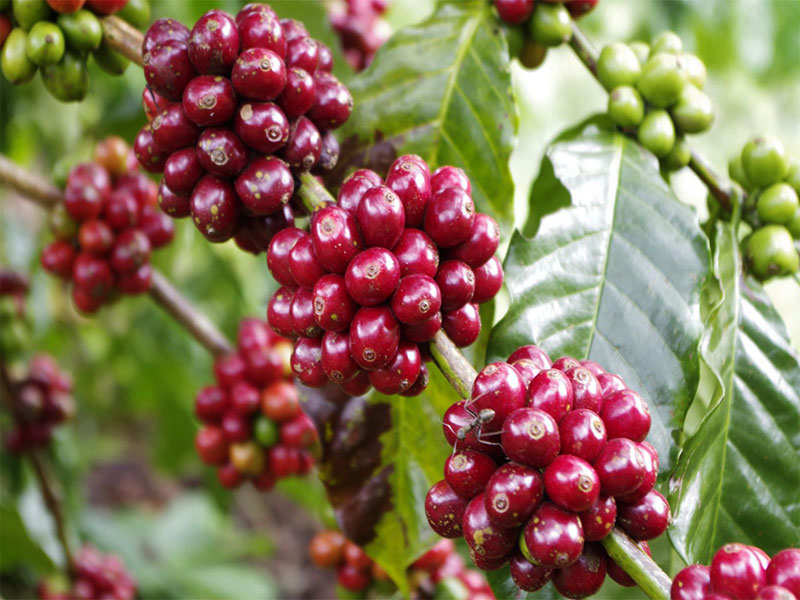
In many commercial plantations, coffee is harvested at various stages, with unripe green beans mixed in with fully ripe red ones for roasting. In contrast, artisanal coffee is handpicked at its peak, with each bean carefully selected to ensure it is free from defects.
Follow the process from start to finish, beginning with the removal of the beans from the fruit, followed by fermentation, drying, peeling, and ultimately roasting and brewing.
The last cup of coffee, sipped on a patio with a view of the plantation after a half-day of learning about its production, will undoubtedly taste entirely different. This is the charm of agrotourism in Dalat: every fruit becomes sweeter when you truly understand the effort behind its creation.
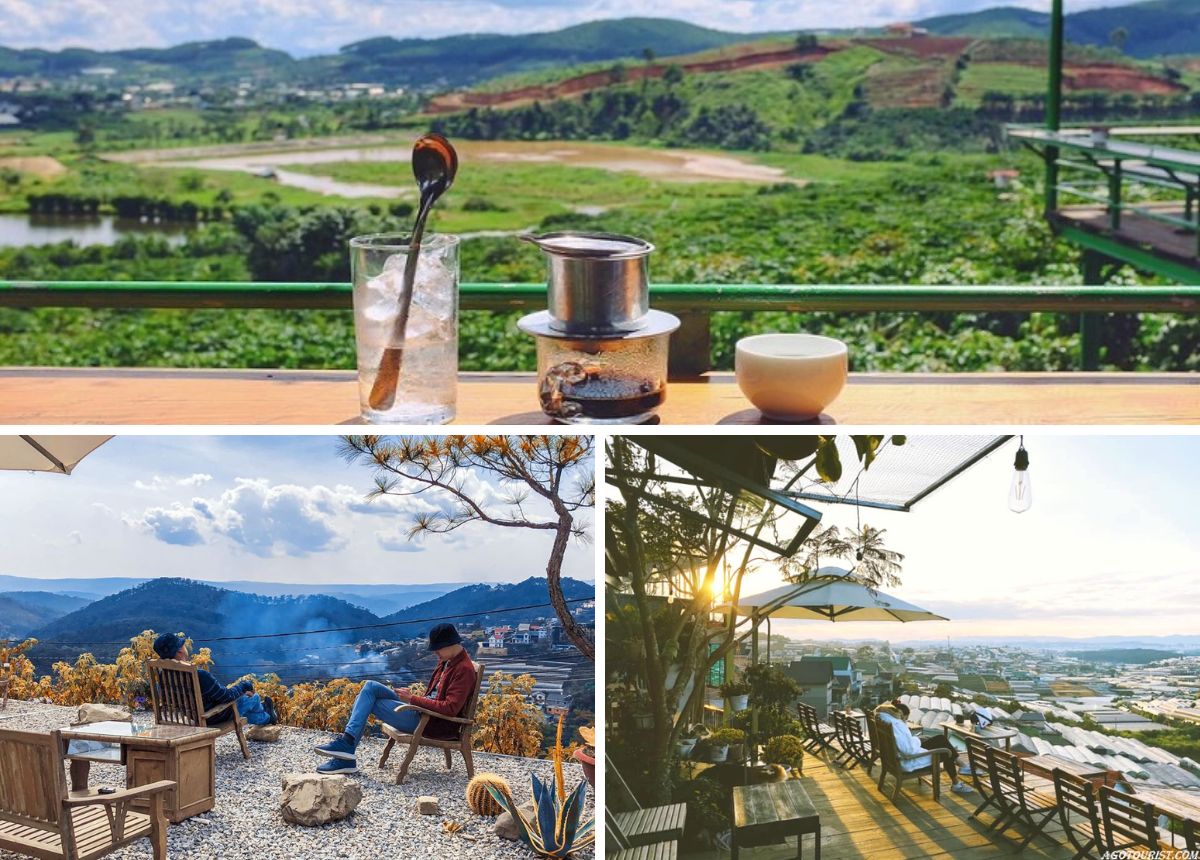
Come and experience Da Lat on your next trip, and create unforgettable memories of Vietnam by securing your Vietnam visa at https://cheapvietnamvisa.net/. As a trusted and reliable visa service, we are here to help turn your dream vacation into reality from the very first step.